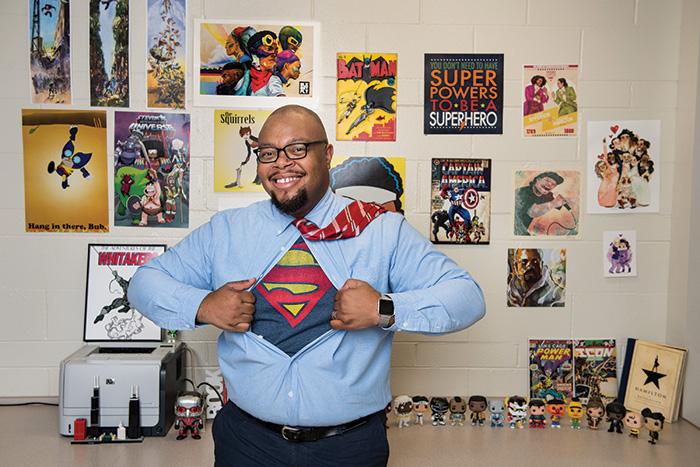I’ve been teaching for over 10 years, and I’ve been teaching with comics for the past seven. But my journey to becoming the Comic Book Teacher started when I was a kid. When I started second grade, I was part of a school-busing program that took kids like me from what we might now call “at-risk” surroundings and put us in a more successful school. This was especially tough for me because I was way outside of my neighborhood, and I knew no one. I felt like an alien.
Until one day in science class when we were learning about the human body, and my teacher asked, “What is the human body made up of?” Hands went up all around me with answers of “hair” or “skin” or even “muscles.” Before I knew it, my hand went up, too. You see, I might have felt out of place most times in school, but I had been consuming a steady diet of Spider-Man, X-Men and The Incredible Hulk. And if there was any topic I felt confident in, it was science. The teacher called on me and I said, “The human body is made of atoms, molecules, cells and stuff that’s controlled by genes that come from your DNA.” My teacher had a shocked expression on her face, confirmed what I said and then went on to talk about skeletons and muscles.
Now, even though my teacher’s lesson that day was about the human body, what I learned was that the comics I loved so much were actually teaching me things I could use in class! However, while my confidence in class was growing, I still was struggling to find friends. I’d sit at the lunch table with other kids, bring out my X-Men comic and read while I ate. Yet again, comics came to my rescue. One of the boys in my class saw what I was reading, came over and asked if he could see it.
We began talking about how cool Wolverine was and argued about whether Batman could beat Superman in a fight. In short, we became fast friends. This was my first experience with one of the other pluses of comics: community building.
When I became a teacher, I knew I would use comics in my classes because of how I had benefited from them, but I also knew that comics had some other superpowers. Yes, comics are engaging, but they also allow reluctant readers to build confidence in comprehending and inferring. My students who once felt like they were missing out on what was going on are now “in on the secret,” and they are often the ones who feel empowered to lead discussions. Comics can help students become successful in areas in which they weren’t previously successful.
Comics also are more current than traditional classroom reading options, which leads to more relevance in the material. Broader representation is easier to find in today’s comics than in short stories and novels on the recommended reading lists in many schools. Comics are where I send students who never see themselves in stories. This is why a few colleagues, the education directors at Pop Culture Classroom and I started the Comics Education Outreach program. We want to get comics, especially social justice-centered comics like March and Persepolis, into as many classrooms as possible through our lending library of comics and graphic novels.
I start off every school year by telling kids a little about myself. Inevitably, when I mention how much I love comics, I always get a bunch of kids who light up with surprise and delight. Then they ask the question they didn’t know they’d get to ask a teacher: Do you think Batman could beat Superman in a fight?
Ronell Whitaker is an English teacher and technology coach at H.L. Richards High School in Chicago, Illinois.
Share Your Story
We want to hear what motivates you to get up each morning and serve students in our nation's schools. Send your 600-word submission for the "Why I Teach" column to us here.


0 COMMENTS